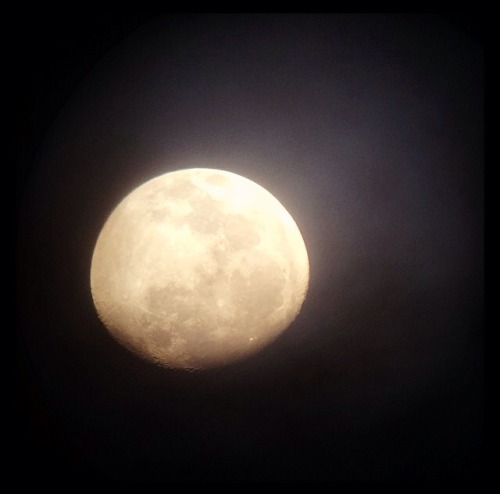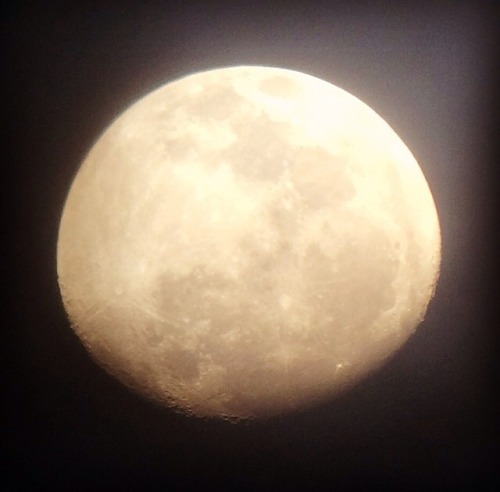Spectacular!

Spectacular!
Credit: Fragile Oasis
More Posts from Xnzda and Others


new photos of jupiter from the juno spacecraft | (good to know that van gogh had a say in how jupiter was designed)

A cosmic blossom
IC 5148 is a beautiful planetary nebula located some 3000 light-years away in the constellation of Grus (The Crane). The nebula has a diameter of a couple of light-years, and it is still growing at over 50 kilometres per second — one of the fastest expanding planetary nebulae known. The term “planetary nebula” arose in the 19th century, when the first observations of such objects — through the small telescopes available at the time — looked somewhat like giant planets. Although the name stuck, it represents the expanding shell of gas ejected from old red giant stars late in their lives.
And now this one resembles a lovely blossom with layered petals.
Credit: European Southern Observatory
Cosmic rays
Cosmic rays provide one of our few direct samples of matter from outside the solar system. They are high energy particles that move through space at nearly the speed of light. Most cosmic rays are atomic nuclei stripped of their atoms with protons (hydrogen nuclei) being the most abundant type but nuclei of elements as heavy as lead have been measured. Within cosmic-rays however we also find other sub-atomic particles like neutrons electrons and neutrinos.

Since cosmic rays are charged – positively charged protons or nuclei, or negatively charged electrons – their paths through space can be deflected by magnetic fields (except for the highest energy cosmic rays). On their journey to Earth, the magnetic fields of the galaxy, the solar system, and the Earth scramble their flight paths so much that we can no longer know exactly where they came from. That means we have to determine where cosmic rays come from by indirect means.

Because cosmic rays carry electric charge, their direction changes as they travel through magnetic fields. By the time the particles reach us, their paths are completely scrambled, as shown by the blue path. We can’t trace them back to their sources. Light travels to us straight from their sources, as shown by the purple path.

One way we learn about cosmic rays is by studying their composition. What are they made of? What fraction are electrons? protons (often referred to as hydrogen nuclei)? helium nuclei? other nuclei from elements on the periodic table? Measuring the quantity of each different element is relatively easy, since the different charges of each nucleus give very different signatures. Harder to measure, but a better fingerprint, is the isotopic composition (nuclei of the same element but with different numbers of neutrons). To tell the isotopes apart involves, in effect, weighing each atomic nucleus that enters the cosmic ray detector.

All of the natural elements in the periodic table are present in cosmic rays. This includes elements lighter than iron, which are produced in stars, and heavier elements that are produced in violent conditions, such as a supernova at the end of a massive star’s life.

Detailed differences in their abundances can tell us about cosmic ray sources and their trip through the galaxy. About 90% of the cosmic ray nuclei are hydrogen (protons), about 9% are helium (alpha particles), and all of the rest of the elements make up only 1%. Even in this one percent there are very rare elements and isotopes. Elements heavier than iron are significantly more rare in the cosmic-ray flux but measuring them yields critical information to understand the source material and acceleration of cosmic rays.

Even if we can’t trace cosmic rays directly to a source, they can still tell us about cosmic objects. Most galactic cosmic rays are probably accelerated in the blast waves of supernova remnants. The remnants of the explosions – expanding clouds of gas and magnetic field – can last for thousands of years, and this is where cosmic rays are accelerated. Bouncing back and forth in the magnetic field of the remnant randomly lets some of the particles gain energy, and become cosmic rays. Eventually they build up enough speed that the remnant can no longer contain them, and they escape into the galaxy.

Cosmic rays accelerated in supernova remnants can only reach a certain maximum energy, which depends on the size of the acceleration region and the magnetic field strength. However, cosmic rays have been observed at much higher energies than supernova remnants can generate, and where these ultra-high-energies come from is an open big question in astronomy. Perhaps they come from outside the galaxy, from active galactic nuclei, quasars or gamma ray bursts.

Or perhaps they’re the signature of some exotic new physics: superstrings, exotic dark matter, strongly-interacting neutrinos, or topological defects in the very structure of the universe. Questions like these tie cosmic-ray astrophysics to basic particle physics and the fundamental nature of the universe. (source)
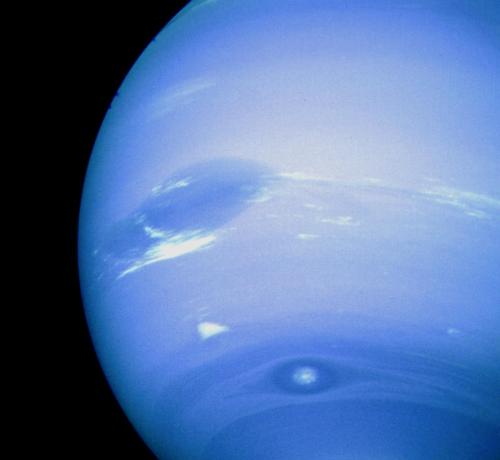
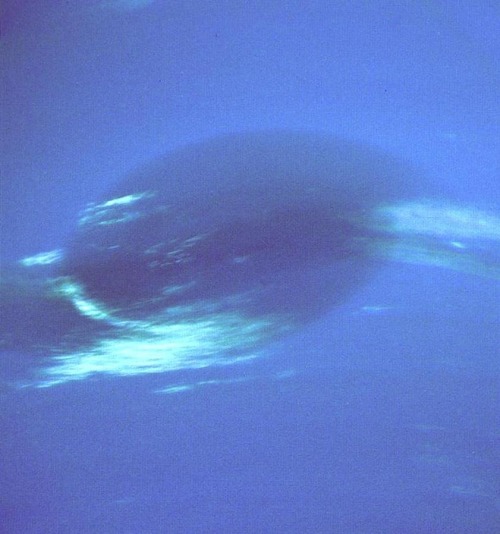
This photograph of Neptune was reconstructed from two images taken by Voyager 2’s narrow-angle camera, through the green and clear filters. At the north (top) is the Great Dark Spot, accompanied by bright, white clouds that undergo rapid changes in appearance.
Credit: NASA
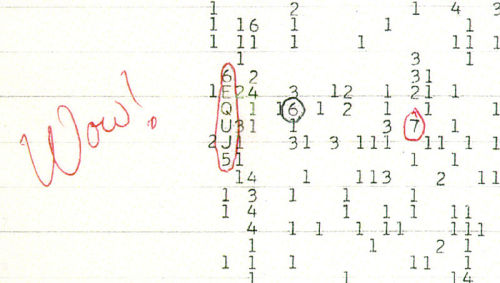
The Wow! signal.
A signal sequence that lasted for 72 seconds in 1977 but has never been seen again. The signal appeared to come from a globular cluster in the Sagittarius constellation, but to this day no definite answer for where the signal originated can be given.
-
 xnzda reblogged this · 5 years ago
xnzda reblogged this · 5 years ago -
 tbvz reblogged this · 9 years ago
tbvz reblogged this · 9 years ago -
 dangerdave3 reblogged this · 9 years ago
dangerdave3 reblogged this · 9 years ago -
 dangerdave3 liked this · 9 years ago
dangerdave3 liked this · 9 years ago -
 tbvz reblogged this · 9 years ago
tbvz reblogged this · 9 years ago -
 lostintime111 liked this · 9 years ago
lostintime111 liked this · 9 years ago -
 bvsementt reblogged this · 9 years ago
bvsementt reblogged this · 9 years ago -
 bvsementt liked this · 9 years ago
bvsementt liked this · 9 years ago -
 tbvz reblogged this · 9 years ago
tbvz reblogged this · 9 years ago -
 filthymuggless reblogged this · 9 years ago
filthymuggless reblogged this · 9 years ago -
 sauntersvaguelydownwards reblogged this · 10 years ago
sauntersvaguelydownwards reblogged this · 10 years ago -
 chilling-tranquility liked this · 10 years ago
chilling-tranquility liked this · 10 years ago -
 hatfish reblogged this · 10 years ago
hatfish reblogged this · 10 years ago -
 cantdrivepasttheplaces reblogged this · 10 years ago
cantdrivepasttheplaces reblogged this · 10 years ago -
 the-nuclear-chaos reblogged this · 10 years ago
the-nuclear-chaos reblogged this · 10 years ago -
 semigratuito liked this · 10 years ago
semigratuito liked this · 10 years ago -
 scardilat reblogged this · 10 years ago
scardilat reblogged this · 10 years ago -
 scardilat liked this · 10 years ago
scardilat liked this · 10 years ago -
 badwolfhunter reblogged this · 10 years ago
badwolfhunter reblogged this · 10 years ago -
 a-kid-of-midnight reblogged this · 10 years ago
a-kid-of-midnight reblogged this · 10 years ago -
 arekuzanra liked this · 10 years ago
arekuzanra liked this · 10 years ago -
 biscuitlittle reblogged this · 10 years ago
biscuitlittle reblogged this · 10 years ago -
 of-tape2 reblogged this · 10 years ago
of-tape2 reblogged this · 10 years ago -
 kiwi-turilli liked this · 10 years ago
kiwi-turilli liked this · 10 years ago -
 ishurla liked this · 10 years ago
ishurla liked this · 10 years ago -
 interesting-mix reblogged this · 10 years ago
interesting-mix reblogged this · 10 years ago -
 biscuitlittle liked this · 10 years ago
biscuitlittle liked this · 10 years ago -
 letsberealnow58 reblogged this · 10 years ago
letsberealnow58 reblogged this · 10 years ago -
 letsberealnow58 liked this · 10 years ago
letsberealnow58 liked this · 10 years ago -
 tinamuso liked this · 10 years ago
tinamuso liked this · 10 years ago -
 just-an0ther-awkward-blog liked this · 10 years ago
just-an0ther-awkward-blog liked this · 10 years ago -
 krakenglez liked this · 10 years ago
krakenglez liked this · 10 years ago -
 cezarauguusto-blog liked this · 10 years ago
cezarauguusto-blog liked this · 10 years ago -
 kowboykelso liked this · 10 years ago
kowboykelso liked this · 10 years ago -
 heir-to-the-noose-of-ghoul liked this · 10 years ago
heir-to-the-noose-of-ghoul liked this · 10 years ago -
 tierras-salinas reblogged this · 10 years ago
tierras-salinas reblogged this · 10 years ago -
 castrvm-doloris reblogged this · 10 years ago
castrvm-doloris reblogged this · 10 years ago -
 gallegory liked this · 10 years ago
gallegory liked this · 10 years ago -
 for-caos reblogged this · 10 years ago
for-caos reblogged this · 10 years ago



